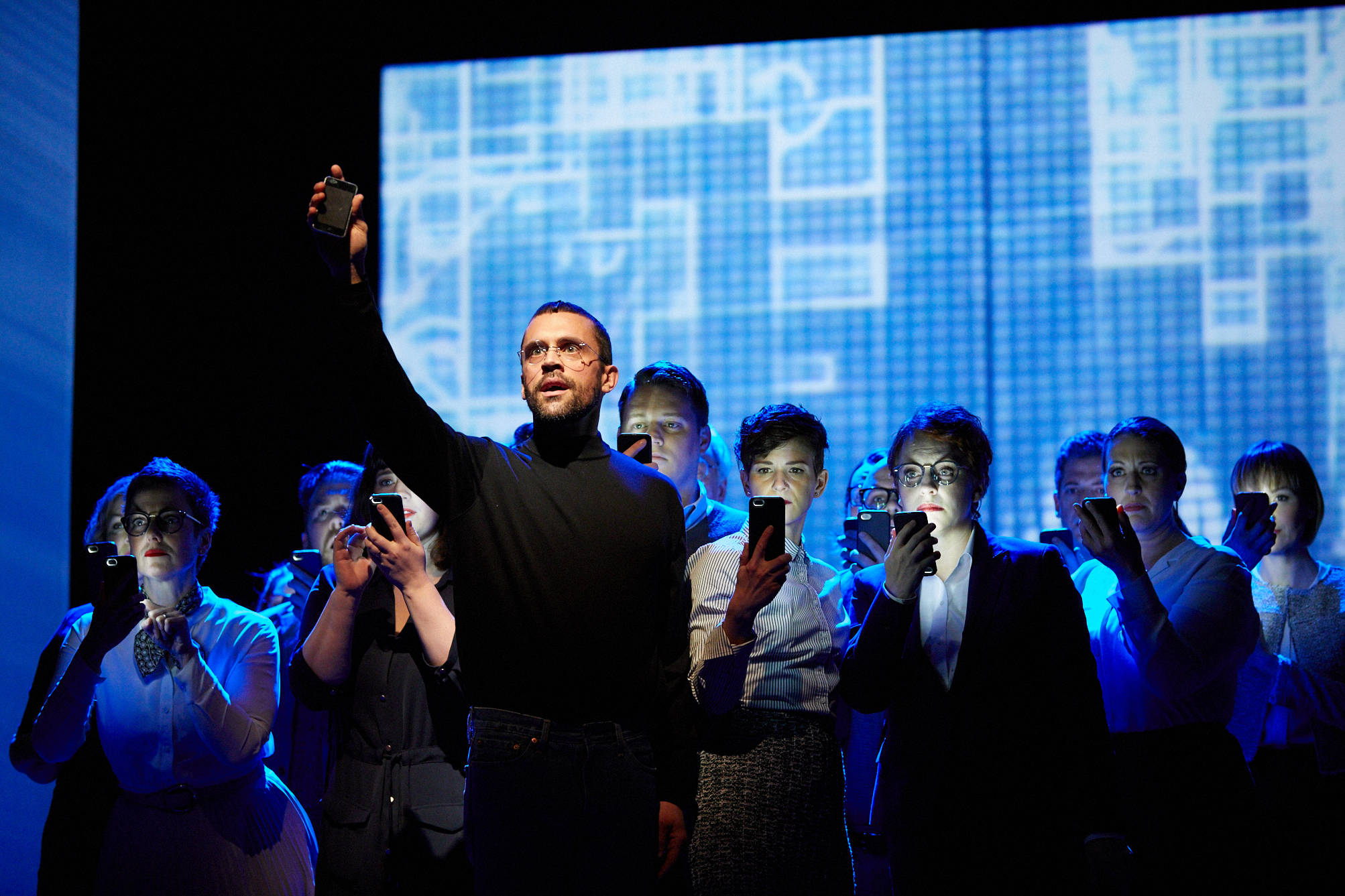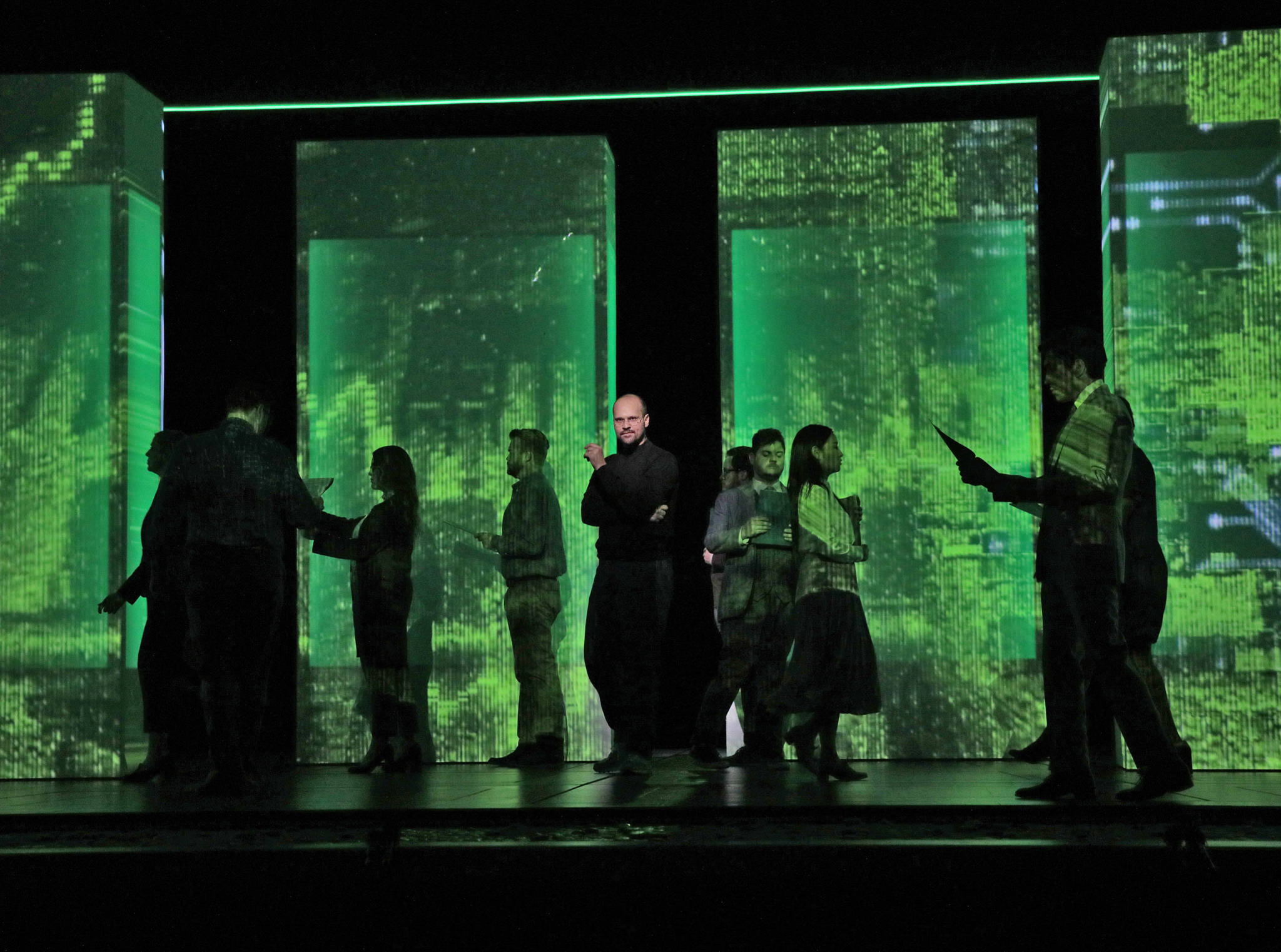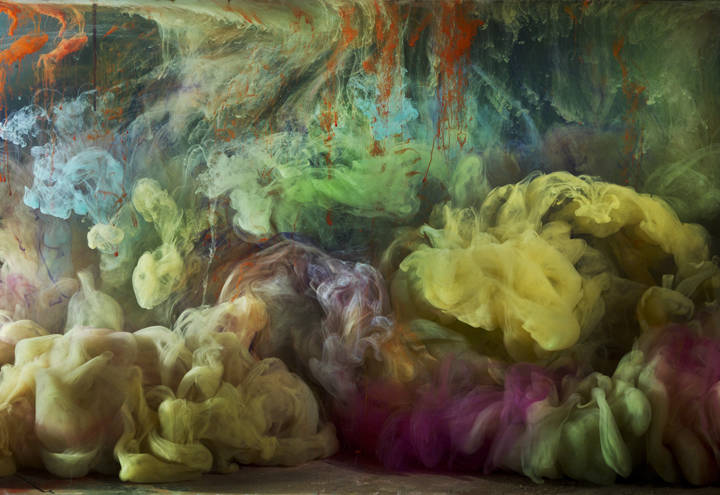How high was the anticipation for Thursday night’s Seattle Symphony premiere of John Luther Adams’ Become Desert? High enough that the national press paid attention: not just The New York Times and The New Yorker, which regularly cover classical music, but even Slate, and they didn’t just write interviews or previews—this past week all three gave Adams space for personal essays. His Become Ocean, which the SSO premiered in 2013, scored a rare hat trick: the Pulitzer Prize for music, the Grammy for Best Classical Contemporary Composition, and a hot-buzz Carnegie Hall performance when the SSO traveled to NYC as part of the 2015 Spring for Music festival. Last night Ocean’s sequel-in-all-but-name amply repaid, even surpassed, expectations.
Adams has said that the first thing he considered when conductor Ludovic Morlot asked him for a follow-up was not only what instruments he would need, but where to place them. Become Desert splits the orchestra into five sections: winds onstage rear, strings onstage front, French horns and trumpets/trombones in the second tier (on the audience’s left and right, respectively), and a 32-voice choir behind the audience in Benaroya Hall’s top tier. Adams added metal percussion to each group, to be sprinkled over the entire work, and timpani, bass drums, and four harps join the strings. Desert’s central metaphor is light, and the 42-minute single-movement piece opens with the palest dawn, high bells over just the slightest shimmering spider-silk of string sound. Slowly other instruments steal in, adding their long tones and gently harshing the sound to a brighter glare; chimes join the bells and harps.
The surround-sound effect is magical, as if the sound is coming from the very air in the hall itself. As in Become Ocean, though the growth is as gradual as can be, the music’s surface is constantly shifting: the instrumental colors shade from pure to blended, and consonance and dissonance float from foreground to background. Lower instruments mellow the sound; cushiony horns and trombones, cellos and basses, become more prominent. The entrance of timpani rolls becomes a major sonic milestone in the slow unfolding. The overall sinking of pitch suggests a progression from sunrise to dusk, but then treble sounds—violins, flutes, sopranos—steal back in, widening the acoustic scope. (Become Desert’s general shape is like the description of the brontosaurus in the old Monty Python sketch—“thin at one end; much, much thicker in the middle; and then thin again at the far end.”) The ethereal shimmer in the orchestra’s stratosphere closes the piece. (Morlot held the silence for several seconds before relaxing to allow applause, somehow without a single cough or program drop. It was the evening’s final acoustic miracle.)
As a moment-to-moment listening experience, Desert is even more enrapturing than Ocean, in large part due to the surround-sound effect. (Unfortunately, this can’t be nearly as effective in a recording.) But the piece is also more transparent, inviting you not to meditate on it from a distance, but to walk in and listen within it. It presents a beguiling challenge: hearing various sounds as clear as day without being entirely sure what they are. Cello or horn? Soprano or violin harmonic? Trombone or the evaporating resonance of a chime? Or some new alchemy? I could have sworn I heard male voices among the choir, though the program credited only “Women of the Seattle Symphony Chorale.” A SSO spokesperson confirmed that Adams did indeed add men to his piece after the programs were printed—but that kind of auditory hallucination seemed completely plausible last night, and I was ready to accept that Adams’ orchestrational skill could somehow make me hear baritones where there were none. To extend the light metaphor, the piece’s overall effect, especially in its saturated central section, is as though some sort of primeval sound is being refracted, separated into whatever the sonic equivalent of a rainbow is—but into infinite intermingling, airy washes of color rather than seven discrete layers.
Recalling NYC’s excitement about Ocean, Morlot and the SSO are already eager to share Desert. They’re scheduled to play it at UC Berkeley on April 7 (followed by Ocean the next night). More important for Seattle, there’s a second performance of Become Desert here Saturday, with Jeremy Denk’s energizing and soulful account of Beethoven’s Piano Concerto no. 5 on the concert’s first half. If you’re not yet intending to be there, rethink your plans. If you don’t, you will—and ought to—regret it.
Become Desert
Saturday, March 31 at 8 p.m. | Benaroya Hall | $22 and up








